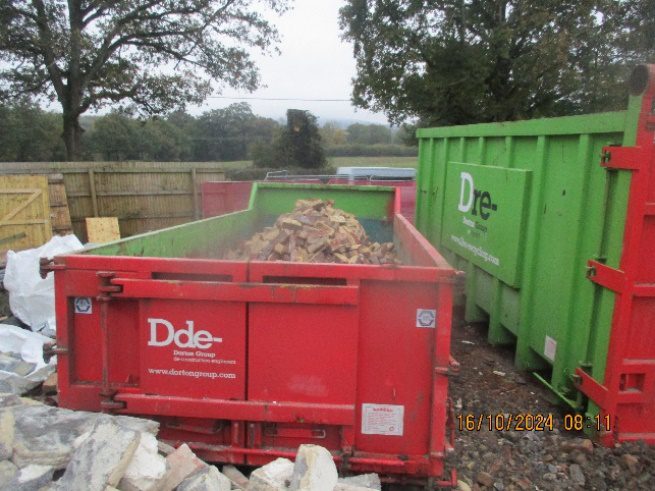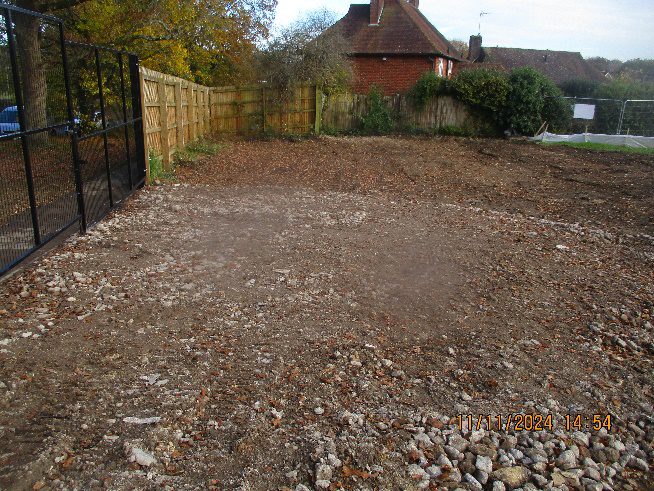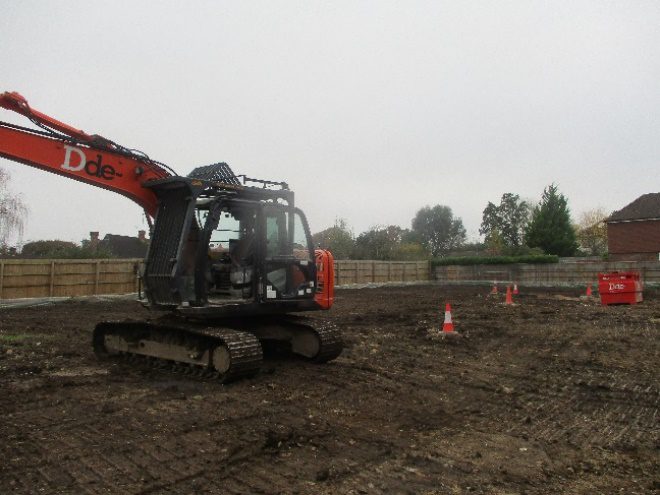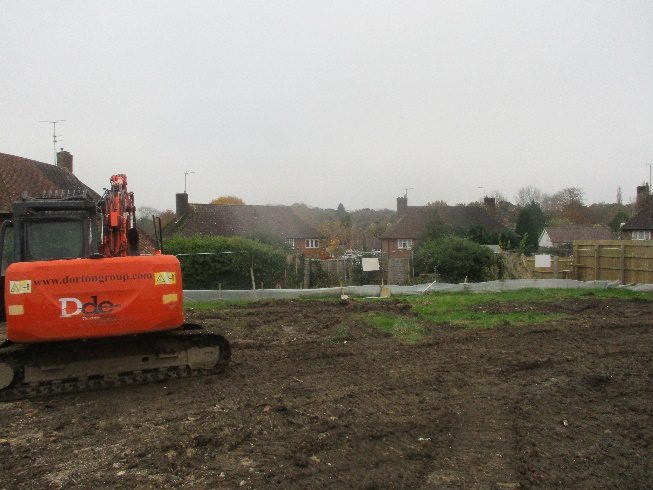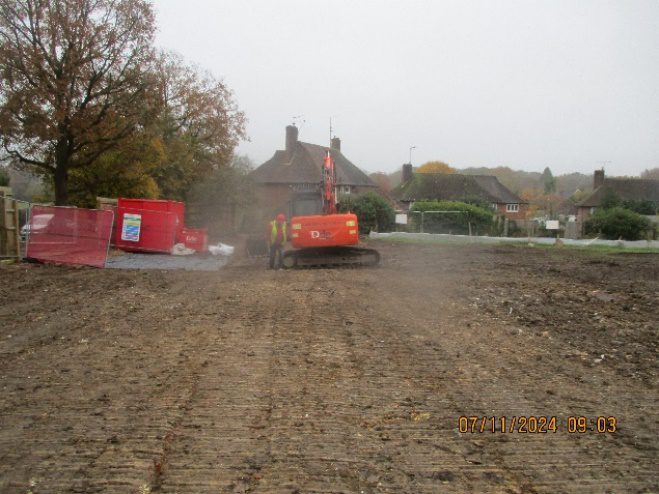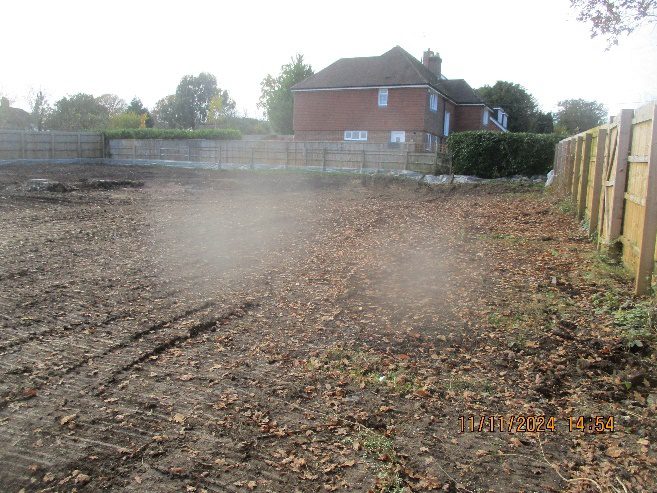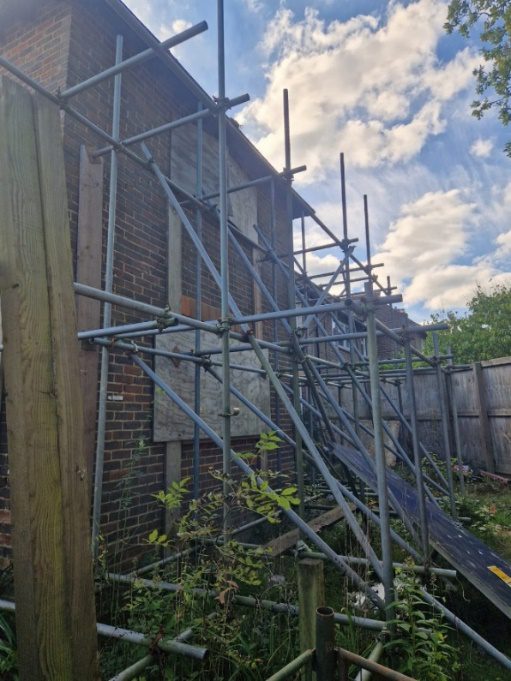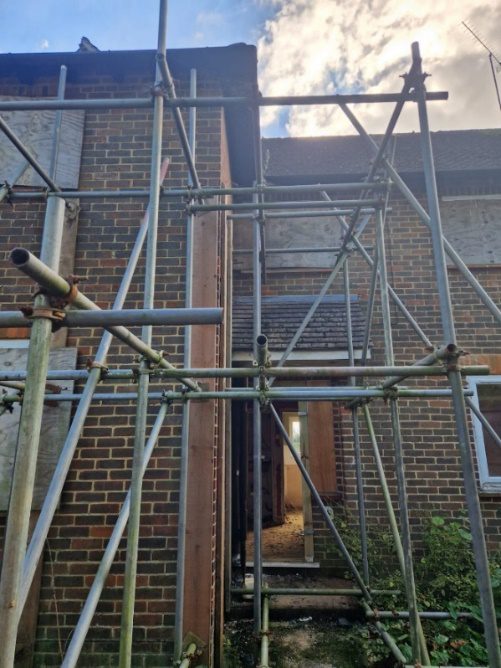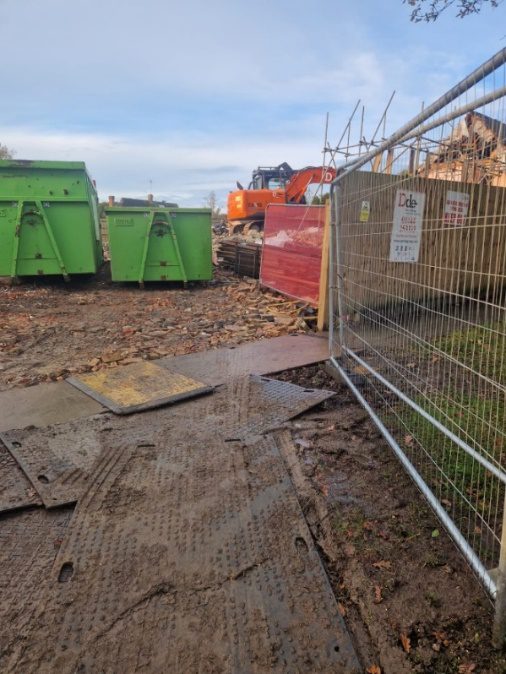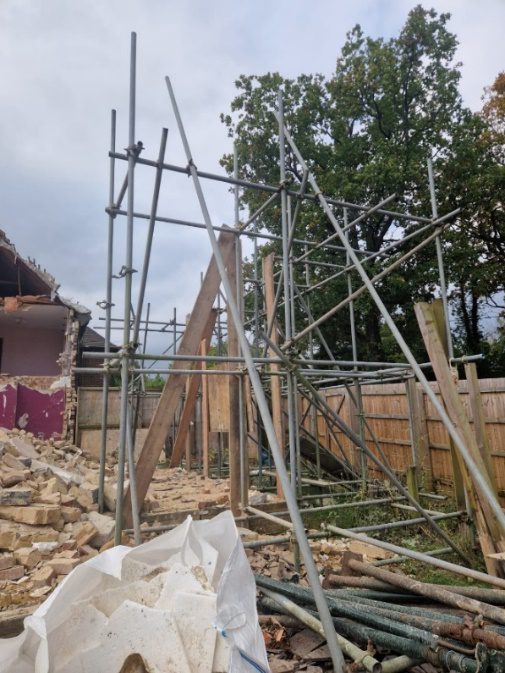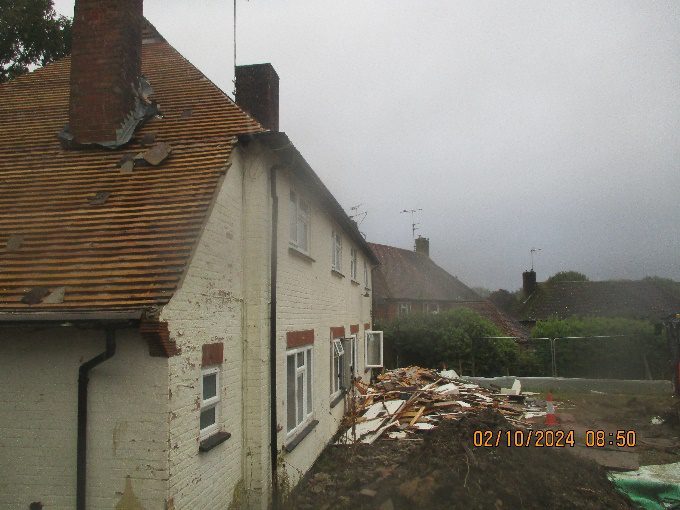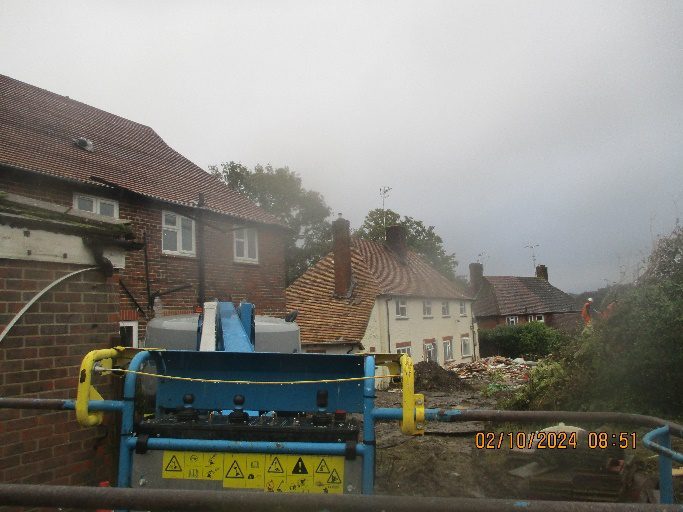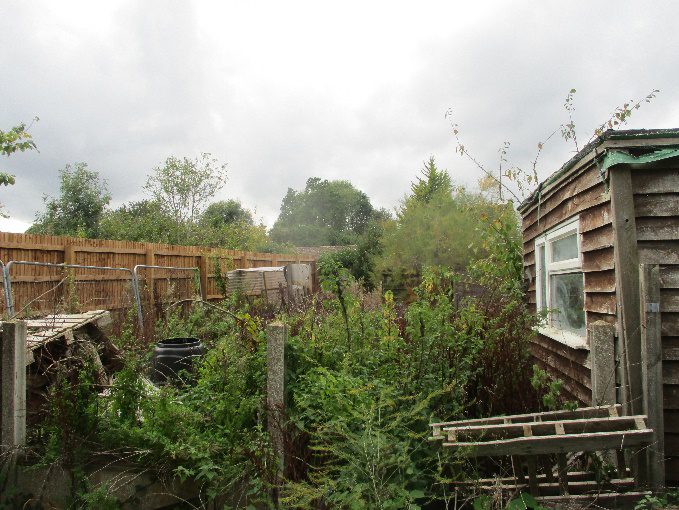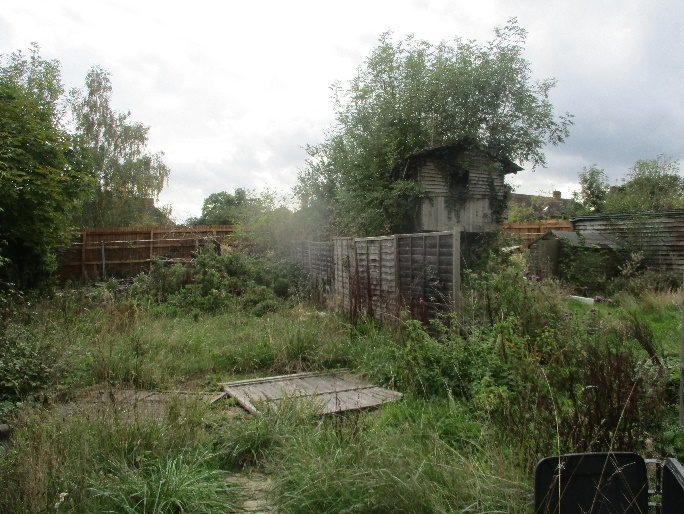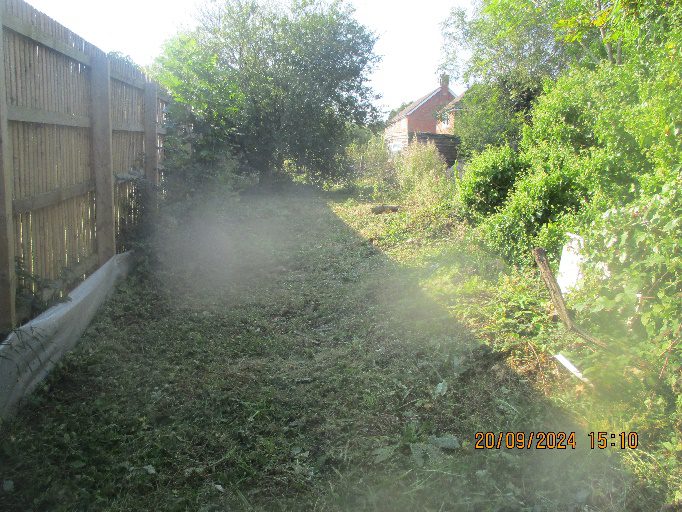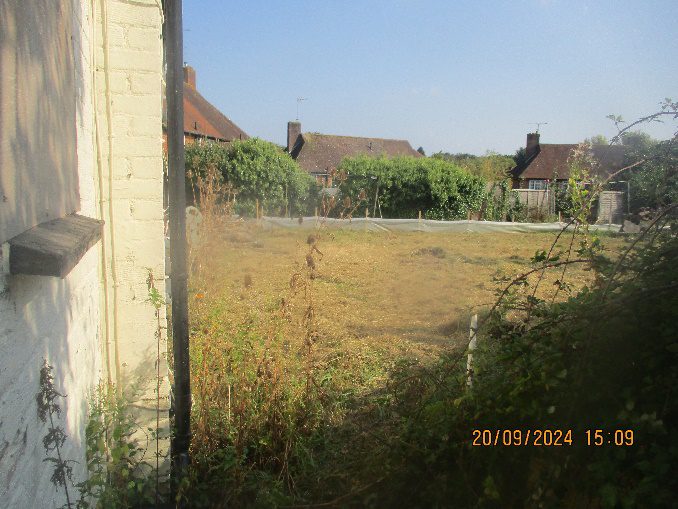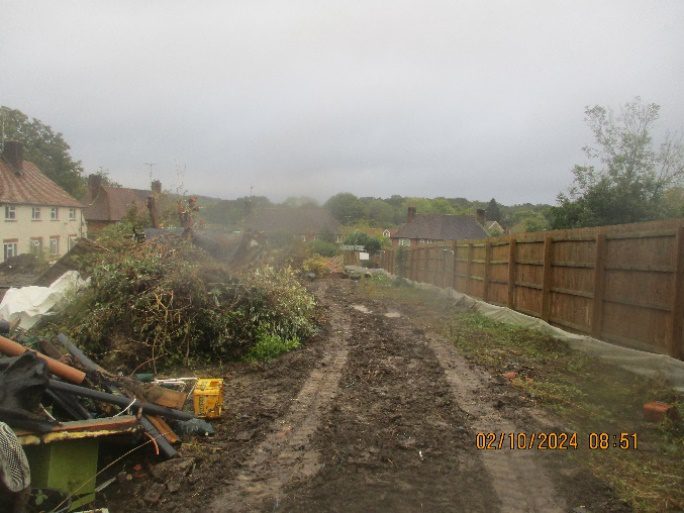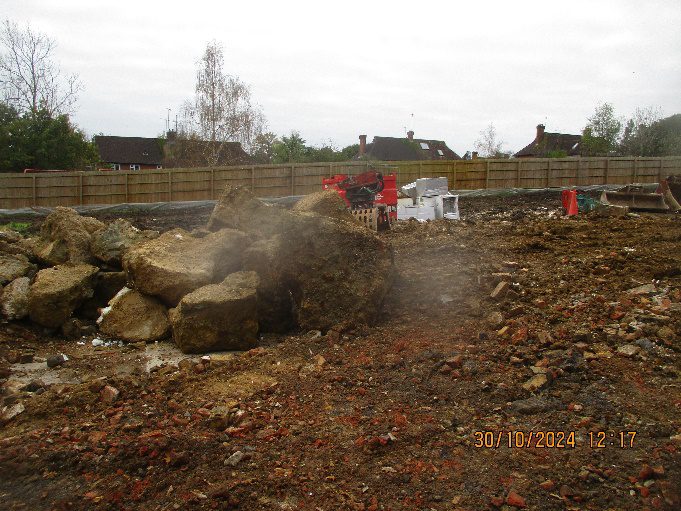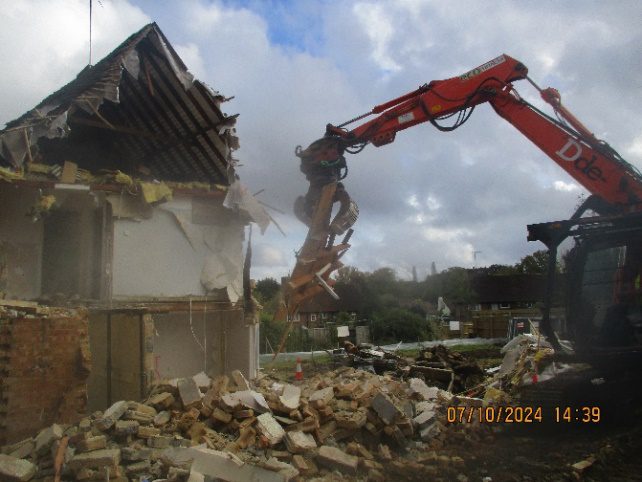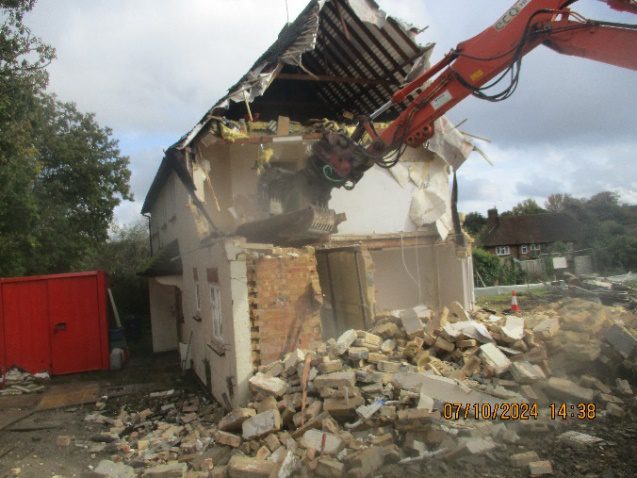Ewhurst
Cranleigh
Surrey GU6 7QQ
CONTRACT COMPLETION DATE 12th November 2024
Deconstruction and Site Clearance Work at 47-49 & 51-57 Downhurst Road, Ewhurst, Cranleigh, Surrey GU6 7QQ
The post-war council houses at 47-57 Downhurst Road in Ewhurst consisted of a pair of semi-detached houses (47 & 49) and four semi-detached maisonettes (51, 53, 55 & 57). The properties were empty and uninhabitable, due to significant active differential movement from subsidence, and had been a target of vandalism by youths in the local community. The principal defects were walls and ground floor slabs suffering from active significant differential movement. The first floor and roof to Nos. 47& 49 were supported by several acrow props, and the front wall to 51-57 was buttressed with scaffolding. The council had concluded that the properties were considered dangerous buildings with a potential risk of collapse, and beyond economic repair. Prompt demolition was the appropriate course of action.



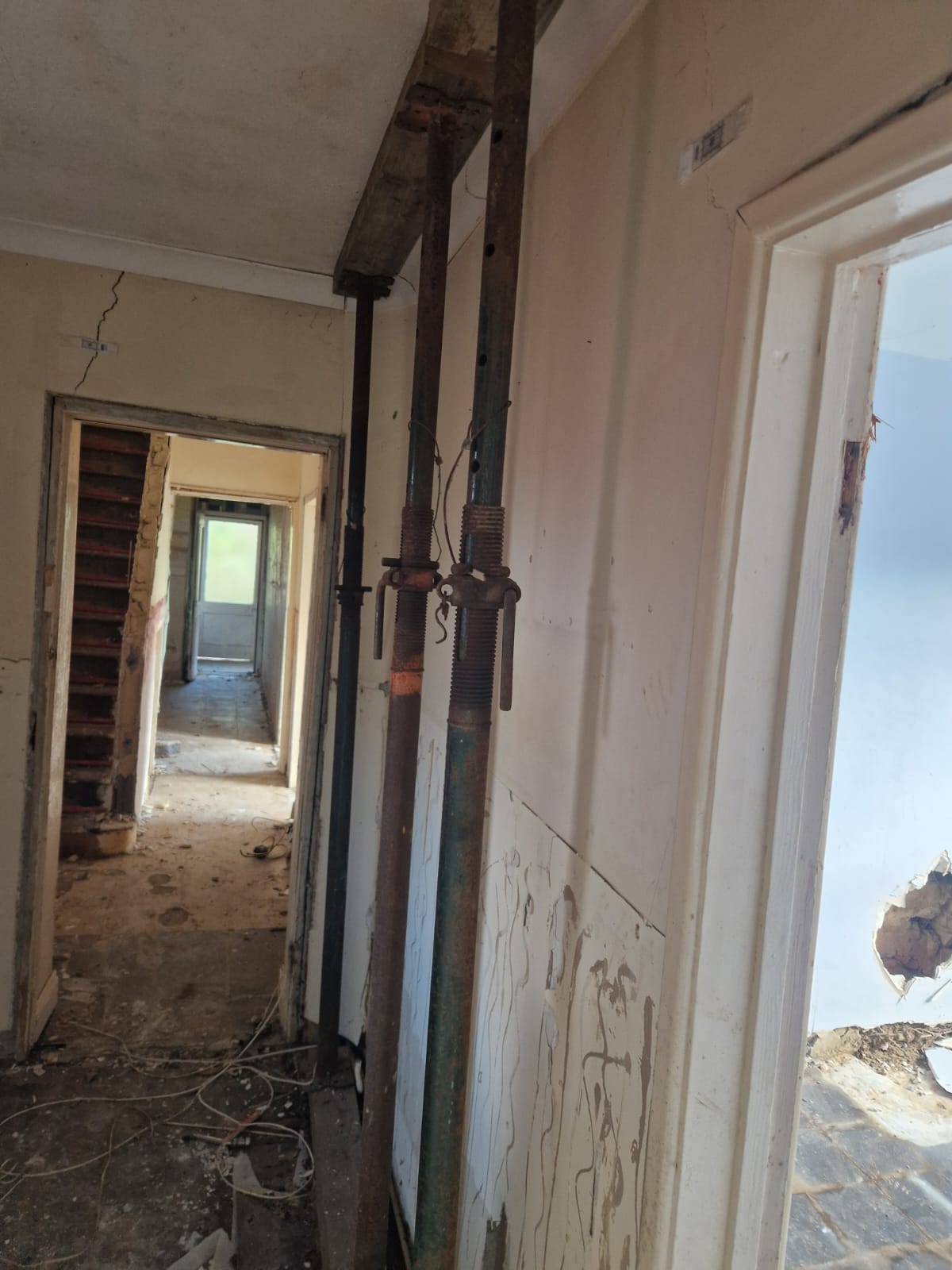
Dorton Demolition & Excavation Limited were awarded this emergency works contract, which involved demolition of the buildings, all extensions and outbuildings, and the complete removal of associated foundations. Additional works included the removal of asbestos contaminated materials, site clearance of rubbish, trees, shrubs and vegetation, and the removal of all hardstanding areas.
Challenges
- Addressing the active differential movement of the houses was critical to ensure the safety of the demolition crew and to prevent any collateral damage to nearby structures and areas. Deconstruction of the properties was carried out by remote demolition which was restricted to designated safety zones within the work area to minimise risk to site operatives and visitors. No personnel were allowed inside the exclusion zones except the machine operator.




- Both properties were considered to support high bat roosting potential and a licence from Natural England was required for demolition to be carried out. Mitigation was required and involved soft stripping all roof finishes by hand under a watching brief by a licensed bat worker. Alternative bat roosting sites were also provided through the provision of bat boxes erected on suitable trees on site.


- Slow worms had been found at every survey event in varying numbers and exclusion reptile fencing was installed around the perimeter of the site. A small park to the rear of the site was used as a temporary receptor site. Prior to site set-up, all debris on the site was removed by hand, and the vegetation cut in a two-stage approach. Existing piles of cut vegetation, garden waste, and debris was removed by hand, and all cuttings and waste arisings removed from site. Mitigation works were always supervised by a licensed ecologist. Supervised soil striping was also undertaken wherever possible.The reptile fencing was maintained throughout the demolition works, and the ecologist consulted for advice whenever the fencing required temporary removal to accommodate demolition.






- Demolition was undertaken in a dense rural residential environment. Several measures were put in place to ensure that any potential disruption to the surrounding site’s current occupants and local community were mitigated, or the impact reduced. The method of reduction to the structures did not entail the use of vibration inducing equipment and was carried out utilizing a selector grab. The removal of slabs and foundations was, wherever practical, by bucket and or ripper rather than hydraulic hammers. Whenever the ground slab required breaking by hydraulic hammers, the action was short term to induce cracking rather than mass breaking. Where the resulting concrete required reduction in size to increase skip volumes, this was executed by use of hydraulic pulverisers as opposed to breakers.


- An undisclosed live sewer running through the site was uncovered. The source was located to be from a neighbouring property located uphill. Dorton’s standard operating procedure is to identify foul and surface water drainage runs as a matter of importance during the early stages of every project we undertake. The survey is marked on the ground and noted on site drawings. Manholes and covers are protected with steel plates. Retained shallow underground runs are avoided by the demolition machine to prevent impact or ground bearing pressure damage.
The project was undertaken successfully and with no reports of near misses and accidents. Traffic and pedestrian management plans were established very early in the planning stage, given the project’s proximity to public footways, street, and residential properties. Careful planning and the development of a close working relationship with the Council enabled this project to be carried out safely, on time and with minimum disruption to the neighbouring residents.
More than 99% of demolition waste arisings was reclaimed or recycled. The majority of the bricks, clay roof tiles, timber doors, and timber floorboards were delivered to our reclamation yard in Bolney, Haywards Heath, for resale to the public and local construction firms. Excavations and voids were backfilled with site won hardcore arisings and the site left clean and level.
